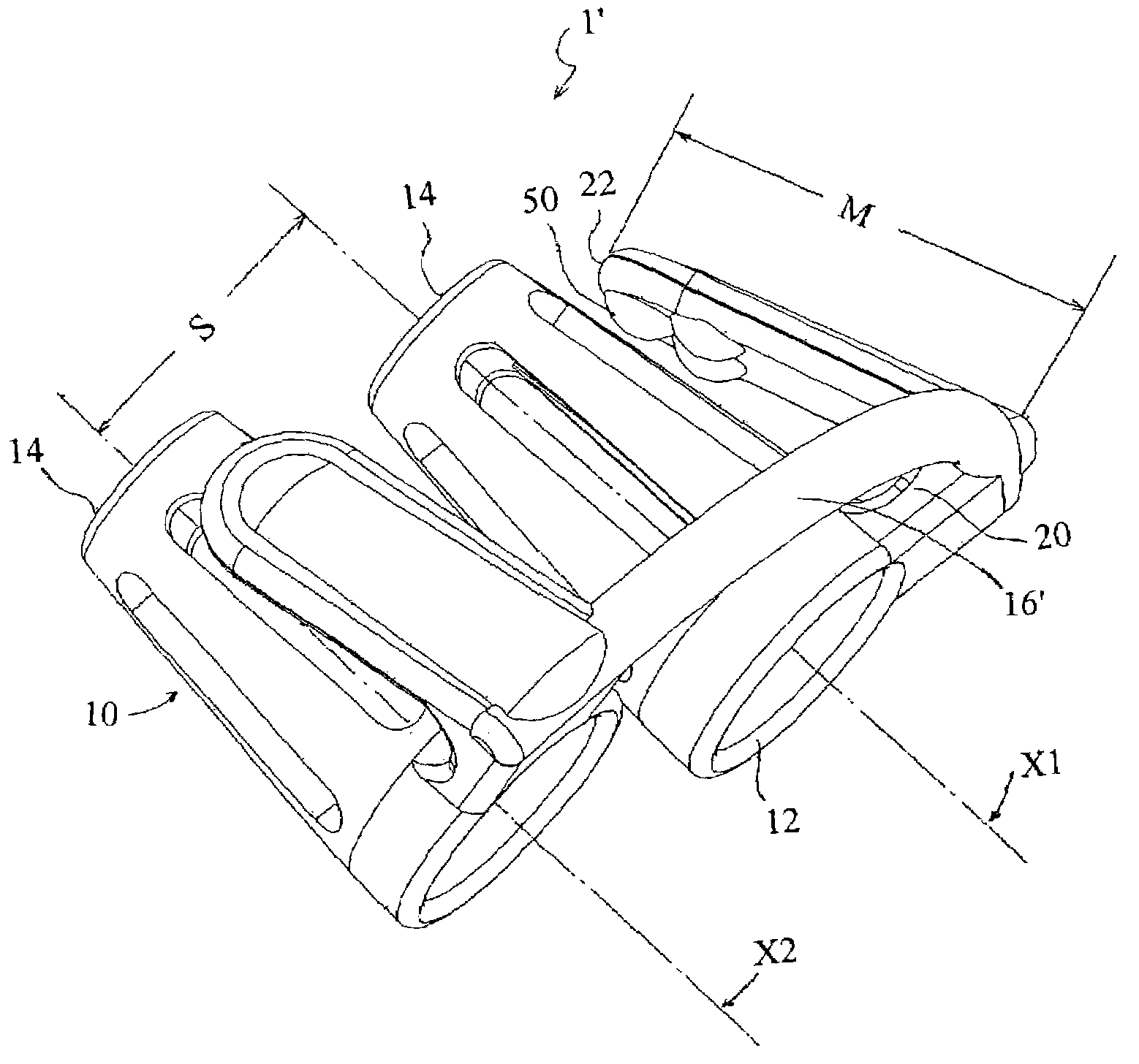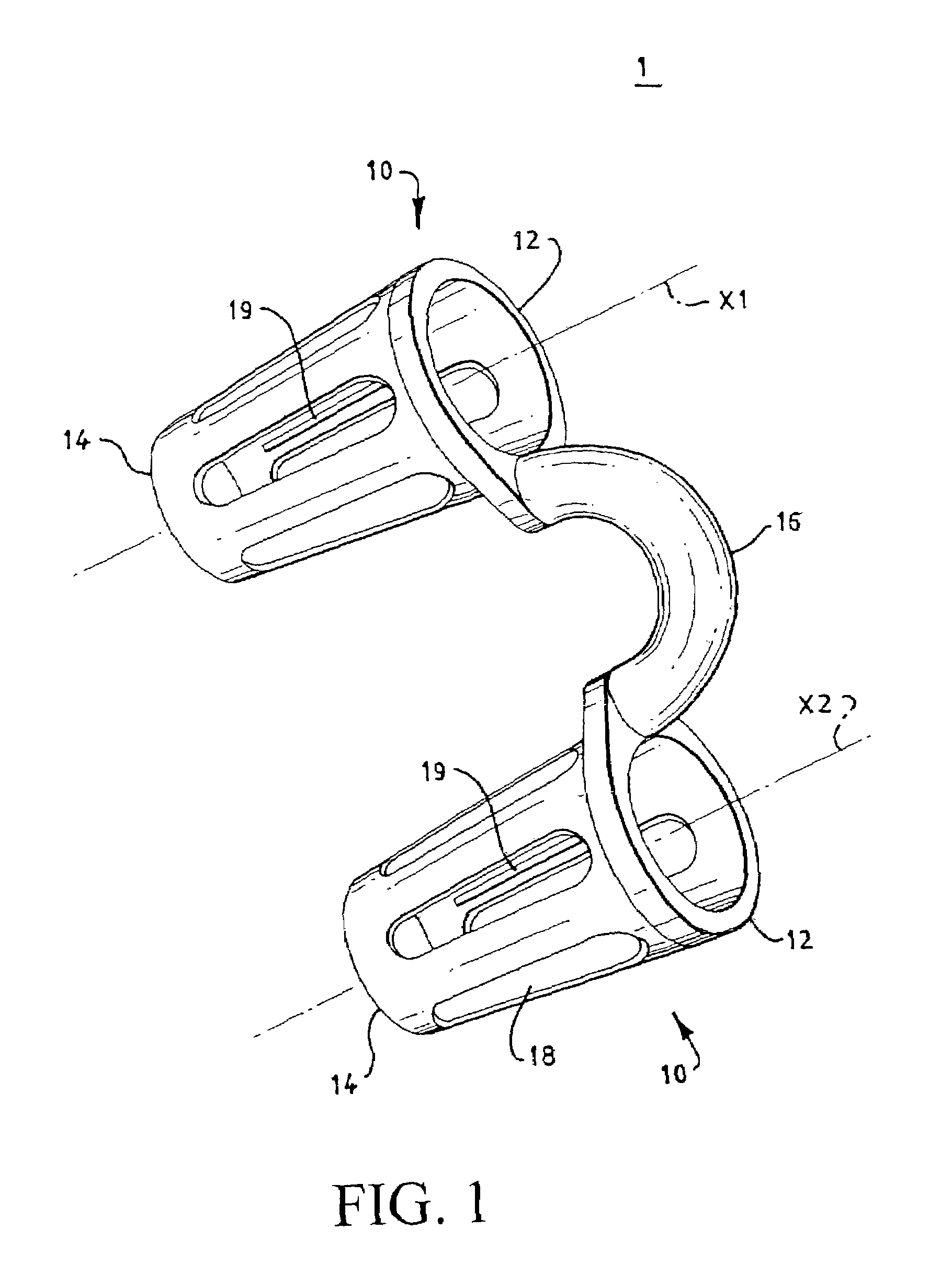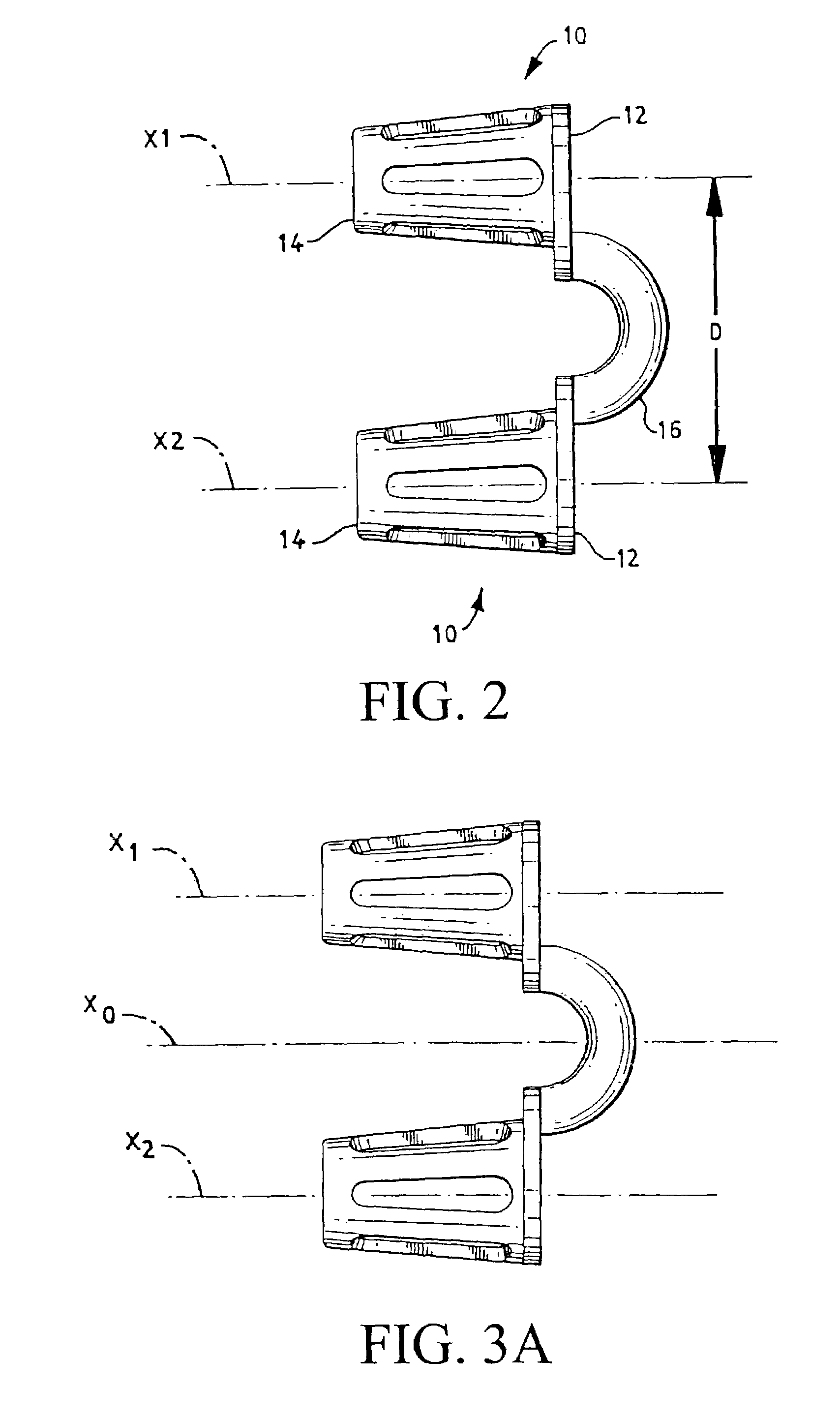Nasal inserts
a technology of nasal inserts and nasal passages, which is applied in the field of nasal inserts, can solve the problems of reducing sleep, reducing airway size, and deteriorating intimacy and relationships, and achieves the effects of improving nasal breathing, reducing snoring, and increasing airflow through the nasal passages
- Summary
- Abstract
- Description
- Claims
- Application Information
AI Technical Summary
Benefits of technology
Problems solved by technology
Method used
Image
Examples
Embodiment Construction
[0037]The nasal breathing assist devices according to the various aspects of the invention are shown in FIGS. 1 through 10. These devices overcome the deficiencies in the currently available devices. The illustrated devices are small, inconspicuous in use, and require no special attachments or fittings. The devices are worn inside the nose, so that the nasal passages are kept open from the inside, rather than by external means. This allows the devices to maintain airways in noses where anatomical abnormalities diminish the effectiveness of externally applied strips. The devices can be used alone, or in conjunction with other snore-reducing aids, such as pillows and medicated nasal sprays.
[0038]In the embodiment shown in FIG. 1, the nasal breathing assist device 1 comprises generally a pair of open ended tubular elements 10 connected together by a coupler element 16.
[0039]The tubular elements 10 are generally circular in cross section and extend a distance along tube axes X1 and X2 f...
PUM
 Login to View More
Login to View More Abstract
Description
Claims
Application Information
 Login to View More
Login to View More - R&D
- Intellectual Property
- Life Sciences
- Materials
- Tech Scout
- Unparalleled Data Quality
- Higher Quality Content
- 60% Fewer Hallucinations
Browse by: Latest US Patents, China's latest patents, Technical Efficacy Thesaurus, Application Domain, Technology Topic, Popular Technical Reports.
© 2025 PatSnap. All rights reserved.Legal|Privacy policy|Modern Slavery Act Transparency Statement|Sitemap|About US| Contact US: help@patsnap.com



